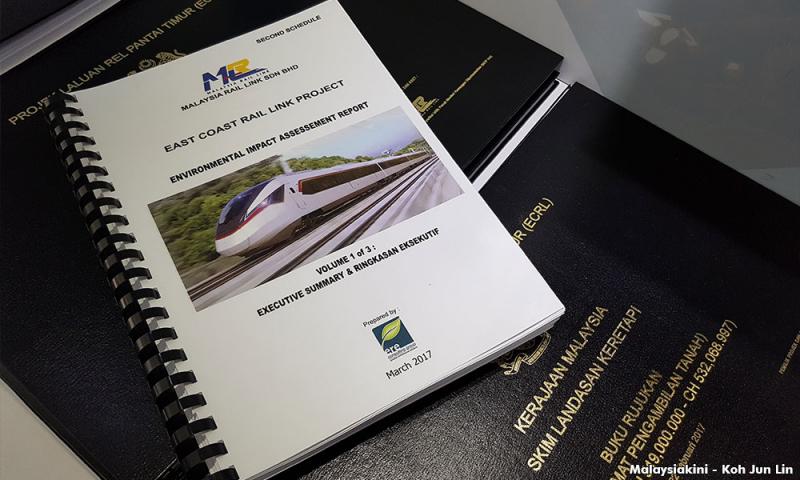The ongoing debate on the future of government-linked companies (GLCs) and their management is complex and multifaceted. These articles contributing to this discussion are based on the third Tun Hussein Onn Chair lecture delivered by Jomo KS, now a member of the Council of Eminent Persons.
COMMENT | After the failure and abuses of privatisation and the contracting-out of services from the 1980s, there was a period of renewed appreciation for the role of the state or government. However, this has since given way to the promotion of public-private partnerships (PPPs).
PPPs are essentially long-term contracts, underwritten by government guarantees, with which the private sector builds (and sometimes runs) major infrastructure projects or services traditionally provided by the state, such as hospitals, schools, roads, railways, water, sanitation and energy.
PPPs are promoted by many governments associated with the Organisation for Economic Cooperation and Development (OECD) and some multilateral development banks – especially the World Bank – as the solution to the financing shortfall needed to achieve development, including the United Nations Sustainable Development Goals (SDGs).
Since the late 1990s, many countries have embraced PPPs in many areas ranging from healthcare and education to transport and infrastructure – with problematic consequences. They were less common in developing countries, but that is changing rapidly, with many countries in Asia, Latin America and Africa now passing enabling legislation and initiating PPP projects.
Nevertheless, experiences with PPPs have been largely, although not exclusively, negative, and very few PPPs have delivered results in the public interest. There has been some supposed success with infrastructure PPPs, mainly due to their financing arrangements. Generally, PPPs for hospitals and schools have much poorer records compared to infrastructure projects.
One can have good financing arrangements, due to preferential interest rates, for a poor PPP project. Nevertheless, private finance all over the world still accounts for a small share of financing of infrastructure. However, good financing arrangements will not save a poor PPP.
PPPs typically involve public financing for developing countries to attract bids from influential private companies, often from a foreign country.
‘Blended finance’, export financing and new supposed aid arrangements have become means for foreign governments to support such powerful corporations bidding for PPP contracts abroad, especially in developing countries. Such arrangements are justified and counted as overseas development assistance, or even as north-south, south-south or triangular development cooperation.
Like privatisation, PPPs often increase fees or charges for users. PPP contracts often undermine the public interest in other ways, with generous host government incentives and other privileges, often compromising and undermining the state’s obligation to regulate in the public interest.
PPPs can limit government capacity to enact new legislation and other policies – such as strengthened environmental or social regulations – that might adversely affect or constrain investor interests.

PPP contracts are typically complex. Negotiations are subject to commercial confidentiality, making it hard for civil society and parliamentarians to scrutinise them and resulting agreements. Such limited transparency significantly increases the likelihood of corruption and undermines democratic accountability.
Hence, in many instances, PPPs become the most expensive financing option and much less cost-effective than transparent competitive good government procurement. They cost governments – and ultimately, citizens – significantly more in the long run than if projects are directly financed with government borrowing.
It is important to establish the circumstances required to achieve efficiency gains and to recognise the longer-term fiscal implications of PPP-related contingent liabilities. Shifting public debt to government guaranteed debt does not really reduce government debt liabilities, but obscures accountability, as it is taken off-budget and is no longer subject to parliamentary, let alone public scrutiny.
Hence, PPPs are more likely to be abused because they can be taken ‘off balance sheet’ so that they do not show up in government budget and debt accounts, giving the illusion of ‘easy money’ or credit. Hence, despite claims to the contrary, PPPs are typically riskier for governments than for the private companies involved, as the government may be required to step in to assume costs and liabilities if things go wrong.
PPPs also undermine democracy and national sovereignty as such contracts tend not to be transparent and subject to unaccountable international adjudication due to investor-state dispute settlement (ISDS) commitments rather than national or international courts. Under World Bank-proposed PPP contracts, for example, national governments can even be liable for losses due to strikes by workers.

PPPs are now an increasingly popular means to finance mega-infrastructure projects, but dams, highways, large plantations, pipelines and energy or transport infrastructure can ruin habitats, displace communities and devastate natural resources. Typically, social and environmental legislation is weakened or circumscribed to attract investors for PPPs.
There are also a growing number of ‘dirty’ energy PPPs, devastating the environment and undermining progressive environmental conservation efforts and exacerbating climate change. PPPs have also led to forced displacement, repression and other abuses of local communities, indigenous peoples, displaced farmers and labourers among others.
One alternative, of course, is government or public procurement. Generally, PPPs are much more expensive than government procurement despite government subsidised credit. However, with a competent government doing good work, government procurement can be efficient and low cost.
Yet, international trade and investment agreements are eroding the rights of governments to pursue such alternatives in the national or public interest. With a competent government and an incorruptible civil service, and competent accountable consultants doing good work, efficient government procurement has generally proved far more cost-effective than PPP alternatives.
It is therefore important to establish why and under what circumstances meaningful gains can be achieved through PPPs, and when these are unlikely.
Coping with PPPs
Clearly, PPPs have emerged in recent years as the development ‘flavour of the decade’ replacing aspects of the old Washington Consensus, including privatisation. Instead of trying to replace or limit the role of government, corporations are increasingly using governments to advance their own interests through PPPs.
On the one hand, in a contemporary variant of previously condemned ‘tied aid’, governments in developed countries are increasingly using their aid or overseas development assistance (ODA) budgets to promote their own national – read corporate – interests, such as by providing ‘blended finance’ on concessional terms to secure PPP contracts, or to otherwise advance the interests of such businesses.
On the other hand, aid-recipient governments have been encouraged to replace government procurement with PPP arrangements to undertake infrastructure and other projects despite the mixed records of PPPs. Hence, many developing countries have little choice but to deal with PPPs.
To secure financing for needed infrastructure, they need strong institutional capacity to create, manage and evaluate PPPs. When presented with PPP proposals, governments need to have the capacity to critically evaluate proposals and to make counter-proposals. It is therefore important for the relevant government institutional capacity to be enhanced to create, manage and evaluate PPP proposals.
Governments should be empowered and discouraged from presuming that they have no choice but to accept PPP proposals from the private sector. Most developing country governments cannot dodge the PPP bullet and need to be able to better deal with the challenge it poses.

Strong institutional capacity to better cope with PPPs requires having a dedicated competent service loyal to government and public priorities and concerns to do the needed. But most low-income and many middle-income developing countries do not have the capacity, let alone the capabilities needed to be able to effectively evaluate and respond to such proposals. Hence, most developing countries need international technical support to accelerate needed capacity building.
Using private consultants to fill the gap in the interim, before national capacities are sufficiently developed, can be useful in the short-term, but most such consultants are mainly oriented to serving better paymasters from the private sector.
Hence, strengthening public sector capacities to cope with PPP proposals is necessary and urgent. This may not be a major problem in some emerging market economies, which generally have more choice in such matters, but it is a major challenge for most developing countries.
ODA should therefore enable public sector capacity building, rather than give governments little choice. Instead of helping countries develop such capacities, ODA often gives developing country governments little choice but to accept favoured PPP proposals.
As many governments may not be able to develop such a centralised capacity and mechanism to deal with very varied PPP proposals, one alternative is for them to work together to develop some kind of shared capacity.
However, relying on organisations committed to PPPs, such as multilateral development banks (MDBs) or international finance institutions (IFIs), raises different problems. So far, they have largely failed to credibly provide such capacities and mechanisms.
They have also not enabled cooperation among developing countries to better cope with the PPP challenge, partly due to their current inclination to promote and enable PPPs involving corporations associated with ‘donor’ governments.
Alternative arrangements
Hence, there is an urgent need to consider and develop alternative arrangements. Government procurement, involving sovereign debt if necessary, has been found to be generally much cheaper, contrary to the misleading claims of PPP advocates.
Ensuring transparent competition among prospective PPP proposals would also help. Many PPP proposals have been approved and implemented following ‘direct negotiations’ without any real or meaningful transparency or competition despite pious rhetoric by donor governments, international financial institutions (IFIs) and multilateral development banks (MDBs) about the importance of and need for competition and transparency.
There are many recent abuses in Malaysia that clearly show that the public interest would have been well served by transparently competitive bidding instead of ‘direct negotiations’.
It is important to make sure that PPPs are not abused. Typically, the government, and ultimately, the public, will bear the costs or take the bulk of the risks while rents or profits mainly accrue to the private partner.
Internationally agreed guidelines would also help. International guidelines for PPPs need to be developed multilaterally through an inclusive multi-stakeholder process. Perhaps, this can be led through the UN Financing for Development (FfD) process. Alternatively, the UN Conference on Trade and Development (Unctad) in Geneva is well placed to work for such guidelines which would go some way to levelling the playing field.
Such guidelines should endeavour to enhance developing countries’ bargaining and negotiating positions, such as by ensuring competition through open bidding. Such guidelines should also avoid the abuse of PPPs, for example, by ensuring that public money is not used to subsidise private risk and rents/profits.
Responsible and accountable developed and developing country governments must work together to ensure that we are all better able to cope with this growing trend of state-sponsorship of private corporate expansion.
Part 1: Privatisation of state-owned enterprises - how it began and spread
Part 2: Is privatisation of Malaysian SOEs good or bad?
Part 3: Has privatisation benefitted the public and consumers?
Part 4: Privatisation: Is the solution worse than the problem?
Part 5: Reforming our government-linked companies
JOMO KS was economics professor and Assistant Secretary General for Economic Development at the United Nations. He held the chair at the Institute for Strategic and International Studies (ISIS) Malaysia in 2016-17.
The views expressed here are those of the author/contributor and do not necessarily represent the views of Malaysiakini.





